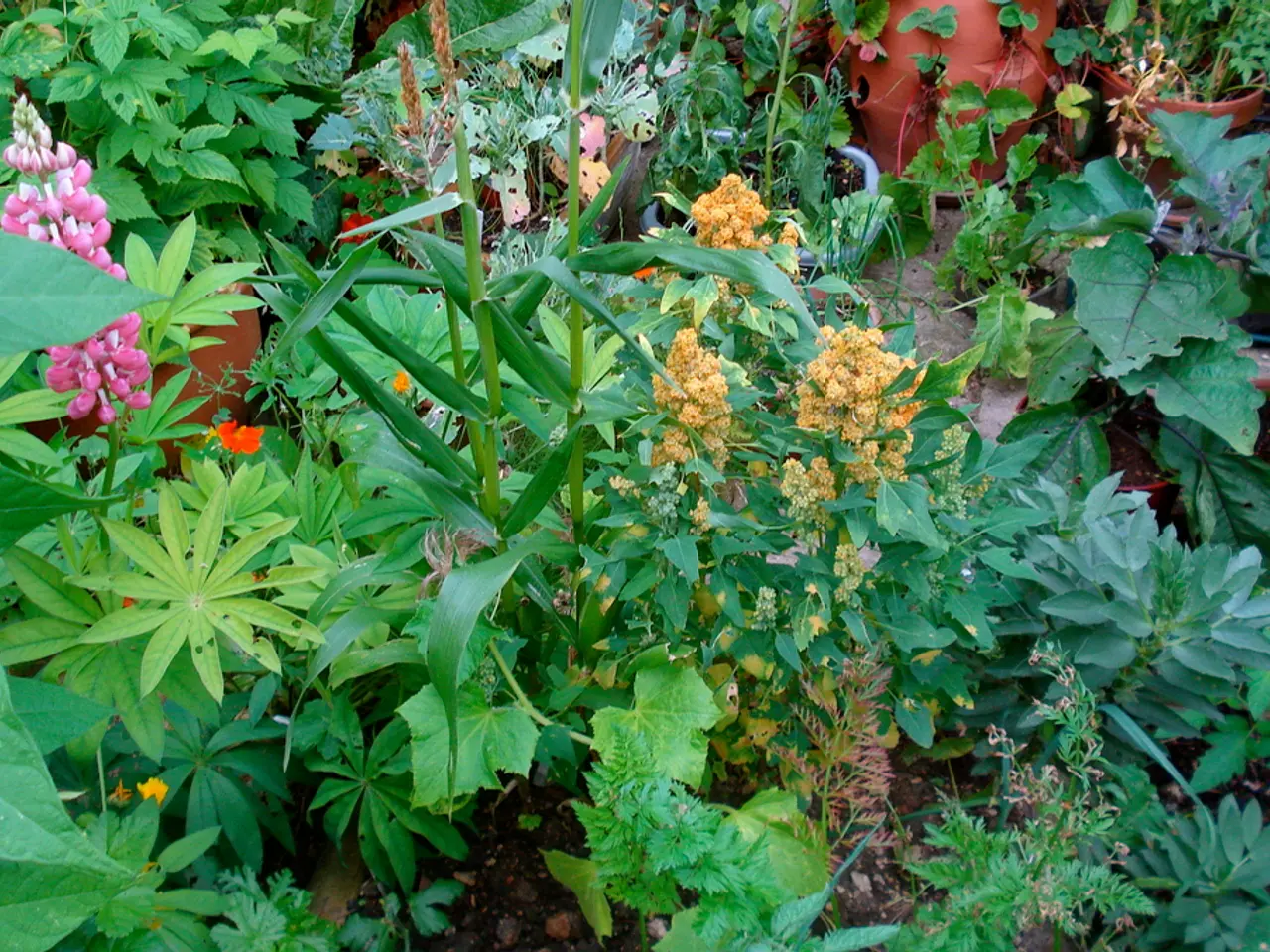Readying Your Outdoor Space for Autumn and Winter
As autumn approaches, it's time to prepare your garden for the colder months ahead. Here are some effective strategies to protect and nurture your vegetable, herb, berry, perennial, flowering plants, trees, and shrubs during fall and winter.
Vegetables and Herbs
For cool-season crops like kale, collards, and other greens, a light frost can actually make them sweeter. However, for other vegetables and herbs, it's essential to take some precautions.
- Plant varieties suited for shorter growing seasons or cooler temperatures, choosing those with shorter days-to-maturity to allow harvest before frost.
- Start seeds or transplants early enough to allow for slower growth in cooler, shorter days—add extra time (about two weeks, the “fall factor”) to maturity estimates.
- Use insulating fabrics, hoops, or row covers to protect crops like broccoli, cauliflower, and beans from early frosts.
- Prepare soil by cooling it down with shading and keeping it moist to help seed germination.
- Consider succession planting for continuous harvests of leafy greens like lettuce and spinach through fall into winter.
- Amend soil with compost or organic matter before planting to improve fertility and moisture retention.
Berries, Perennials, Trees, and Shrubs
Fall is an ideal time for planting these plants, as it allows them to establish strong root systems in warm soil before freezing temperatures arrive.
- Plant perennials early enough in fall (preferably before the end of September) so they have adequate time to root deeply, especially those that die back to the ground annually.
- Use root stimulators, mycorrhizal fungi amendments, and vitamin solutions like Superthrive to reduce transplant shock and enhance root growth.
- Water thoroughly after planting and continue watering weekly until soil freezes to support root development.
- Apply 2-3 inches of mulch after the ground freezes to insulate roots, prevent soil temperature fluctuations, and reduce frost heaving.
Flowering Bulbs and Ornamental Plants
- Plant spring-blooming bulbs (tulips, daffodils, crocuses) in fall at proper depths (three times their height) to ensure cold chilling required for blooming.
- Use a mix of early, mid, and late-season blooming bulbs to extend spring color.
Additional Considerations
- In controlled environment agriculture (CEA) or greenhouses, manage lighting and temperature to time flowering and growth appropriately, especially for sensitive crops like chrysanthemums and poinsettias.
- For outdoor shrubs and trees, fall is an ideal time for planting or overwintering to reduce future purchasing costs and promote early spring growth.
Miscellaneous Tips
- Mulch insulates plants, keeping them alive even in their dormant state during the cold months.
- Rosemary is more fragile and will require shelter for the winter.
- Parsley is resistant to light frost but it will require a cover-up on cold nights.
- Strawberries can be insulated and protected from hard frosts using hay or straws.
- Tomato, squash, pea, beans, etc., cannot tolerate the cold at all.
- Mulching perennials with a generous layer of straw, hay, peat moss, or leaves can protect them from the cold.
- Multi-stemmed deciduous trees like upright evergreens and birch need protection from breakage brought on by heavy snow and ice.
- Gather compost materials, such as healthy dead plant materials, for use in the next growing season.
- Perennials and flowering shrubs should be watered deeply during the fall season.
- Organize and store outdoor containers, metal buckets, hoses, hose nozzles, and sprinkle attachments properly before the cold season.
- Regularly check trees and shrubs, remove broken branches, and make clean cuts close to the trunk.
- The fall season is the best time to protect a new flowerbed from emergent growth using landscape fabric or mulch.
- Small trees and tiny shrubs need protection from cold with snow fencing, straw, or shredded leaves.
- Drain lawn mower's fuel tank and winter-proof power equipment according to the owner's manual.
- Evergreen perennials do not require regular trimming and should only be trimmed right after blooming.
- Delicate greens, like lettuces, cannot withstand the frost and will need protection.
- Mow the lawn late in the fall just as the grass begins to grow to prevent unsightly brown patches in the spring.
- Remove all fallen leaves, twigs, and other garden debris, and use them as mulch for perennial plants or add to the compost pile.
- Till the soil gently in mild winters to break hard clumps and aerate the soil for the next growing season.
- Vegetables like carrots, turnips, beets, parsnips, and rutabagas can survive the dropping temperature in fall and winter.
- Potatoes need to be dug and stored as soon as the cooler climate sets in.
- Parsnips taste better when left to mature near freezing temperature.
- Woody perennials should not be pruned in the fall and pruning should be continued in the spring.
- Most perennials and flowering plants can withstand the cold climate and go dormant during the winter season.
- Herbs like sage, thyme, and chives are resilient to cold climate and require minimal preparation.
By following these strategies, you can protect your plants from cold damage, promote healthy root systems, and ensure productivity or blooms in the following growing season. Mulching, timely planting, soil preparation, and protection are essential layers in successful fall and winter garden management.
- Maintaining a balanced lifestyle during fall and winter can help you stay connected to your home-and-garden while managing the necessities of indoor activities, such as tending to the herbs indoors that cannot tolerate the cold or nurturing your houseplants.
- To complement the productivity of the outdoor garden, consider developing a home-and-garden lifestyle that emphasizes indoor cultivation, such as setting up a hydroponics system for microgreens or cultivating cold-hardy herbs like rosemary or thyme indoors.




